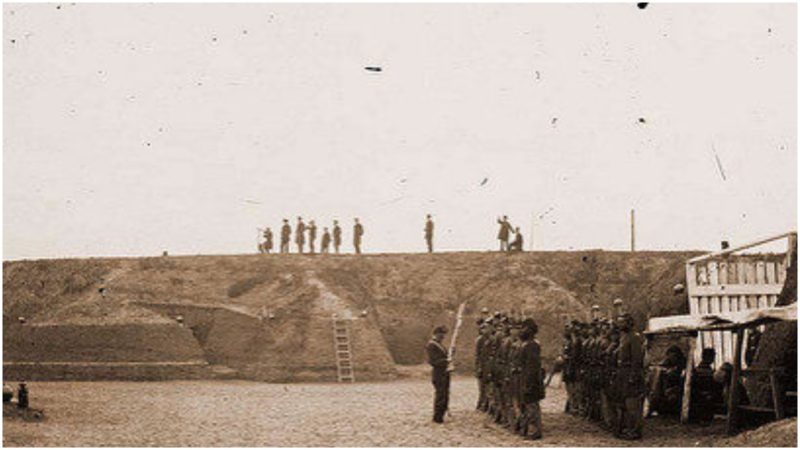This Confederate fortification formed part of the defenses of Charleston Harbor in South Carolina. It stood on a beachhead on Morris Island, overlooking the southern entrance to the harbor. As a historical site, Fort Wagner is known for two important Civil War battles that took place in the summer of 1863, during a campaign by the Union Army to take control of Charleston.
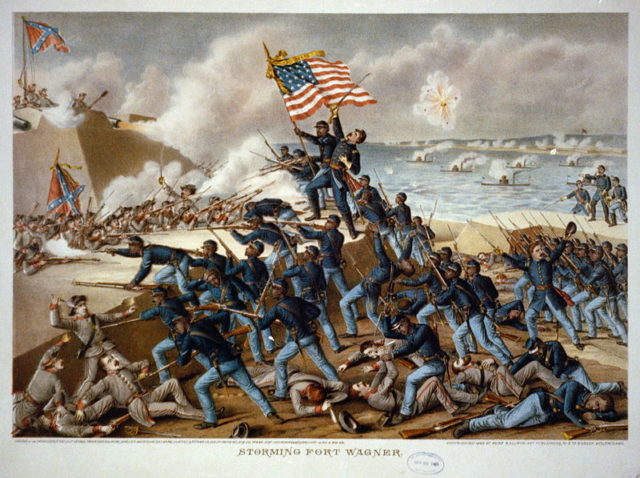
The fort itself is named after Thomas M. Wagner, a lieutenant colonel from the Confederate Army who lost his life in a cannon explosion. It was around 250 yards long and around 100 yards wide, and was flanked by a dismal swamp on the west and the Atlantic Ocean on the east. Fort Wagner’s landward faces were protected by a deep water-filled ditch, land-mines and sharp stakes.
It was a formidable fortification. The walls, which rose some 30 feet into the air, were made from a combination of dirt and sand, supported by sandbags and palmetto logs.
Having such a strategic position would be for nothing if there were no adequate weapons to defend it. For this reason, the fort was equipped with 14 cannons, the largest of which was a 10-inch Columbiad; a magnificent beast that fired large caliber projectiles over long ranges. Given its size, this fort could easily fit and keep safe around 1,000 people, making it a perfect shield against enemy attack.
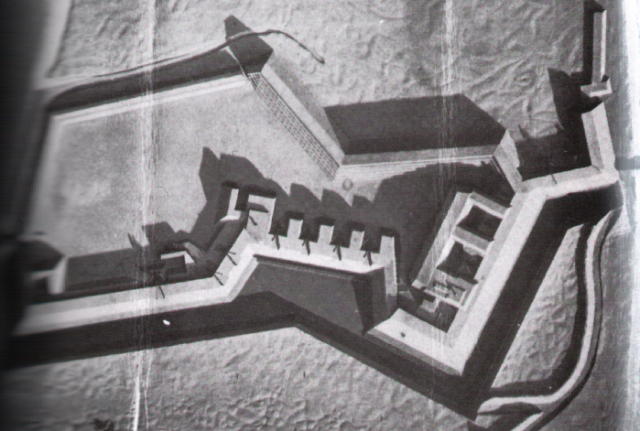
The First Battle of Fort Wagner began on July 10, 1863. A brigade led by Brigadier General George C. Strong landed on the south of the island and advanced on Fort Wagner. They attacked at first light the following day, but were hampered by thick fog and unable to breach the walls. The Union suffered 339 casualties in the failed assault, Confederates only 12.
One week later, the United States Army embarked upon a second attack. This Second Battle of Fort Wagner is the one for which Fort Wagner is known today.
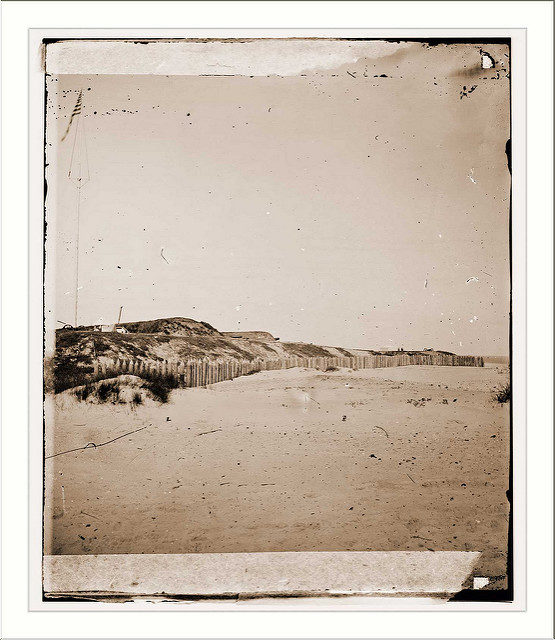
It began with a strong attack on July 18, led by the 54th Massachusetts Volunteer Infantry. The special thing about this Union regiment was that it was entirely comprised of black soldiers, something that the Confederates didn’t like at all. At the head of the infantry stood Colonel Robert Shaw, a prominent American soldier who fearlessly led his men, though sadly was killed during the assault.
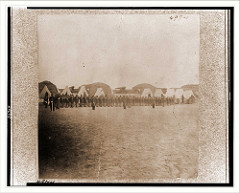
The attack itself was unsuccessful, though it sparked a new recruitment drive in the South, which called for “Colored men, rally ’round the flag of freedom,” that led to the advantage the Union forces would have at a later date. Following the attack, Unionist soldiers surrounded the fort.
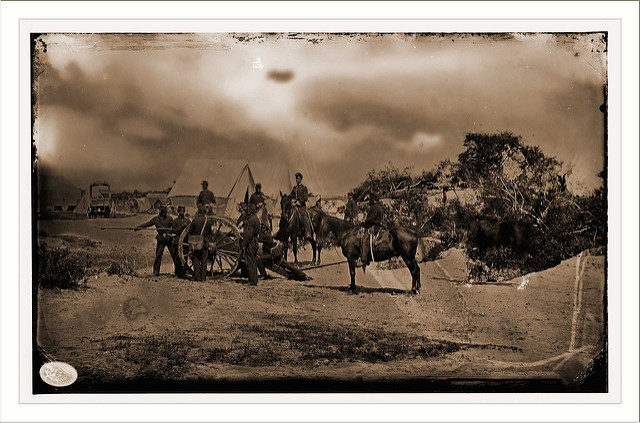
Then they started a series of attacks that lasted for full two months, day in and day out until the Confederates had no other choice but to turn and leave the fort, though they took with them their weapons and cannons. The Confederates left on September 7, 1863.
“By the time he read the intercepted message, he knew Wagner and Gregg were destined to fall. His men could no longer fight back. The bombardment was so heavy that it all but ignored any resistance put forward by the Rebels. Col. Keitt lost around 100 men on the 5th and was wondering what, if any, plans General Beauregard had for Morris Island” writes the Civil War Daily Gazette.
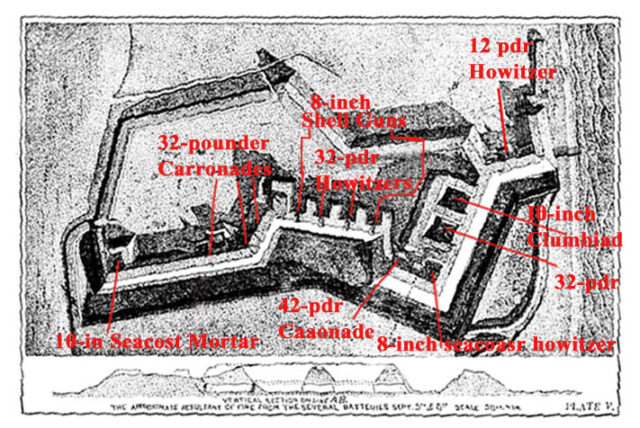
The fall of this battery, as well as the loss of Fort Gregg, played a major role in the history of Morris Island, and by extension, in the history of the American Civil War.
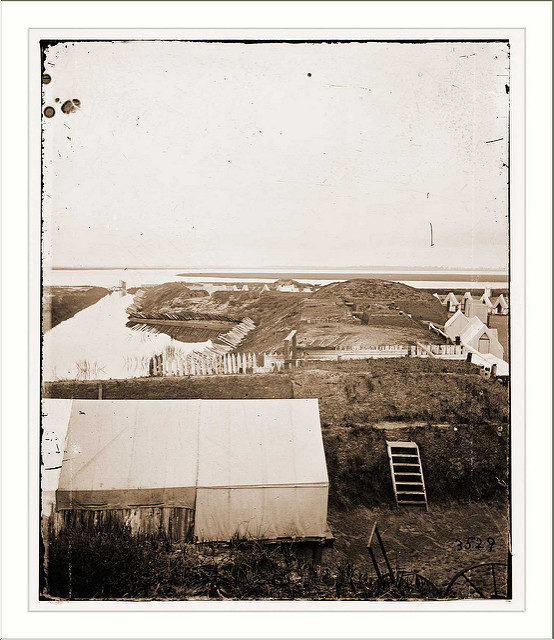
The story of this fort served as an inspiration for Kevin Jarre to write the screenplay for Glory, based on the written accounts of Colonel Robert Gould Shaw, as well as Peter Burchard’s novel One Gallant Rush.
Almost nothing remains of this fort today given its construction material, only old photographs that help to immortalize the story of Fort Wagner.
